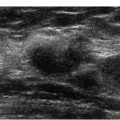6 Digital Mammographic Characteristics of Masses In general, digital mammographic display of breast masses is similar to screen-film.1 The relatively equivalent visibility is supported by in vitro screen-film and digital mammographic comparison of surgical specimens,2 as well as prospective clinical evaluation of women with mammographic masses.3 Multiple studies have addressed the subjective perceptual and diagnostic discrepancies between the two methods. In general, digital mammography produces high-contrast images and reduces the opacity of denser breasts, which increases the confidence of radiologists to exclude masses.3,4 However these factors as well as slight discrepancies in identification of tumor shape and margin have not produced significant differences in the overall detection of neoplastic masses.5 Masses on digital mammography appear similar to those on screen-film images. Although the general workup of digital mammographic masses is similar to screen-film, soft copy viewing allows radiologists to manipulate the screening image more than screen-film. Changing the gray scale window width and level is one of the most useful digital mammographic methods to identify masses. This technique allows masses partially obscured by glandular tissue to be better visualized.4 This improved conspicuity is important in defining the shape of a mass. Changing the window width and level also improves the identification of any associated suspicious findings, such as architectural distortion, skin thickening, and nipple inversion. Finally, retrospective gray scale manipulation of screening or diagnostic mammographic images can provide useful information to locally stage a biopsy-proven cancer by identifying malignant-appearing satellite masses or calcification clusters. Digital mammography workstations commonly have computer-aided detection (CAD) software included in their review protocols. CAD appears more sensitive for microcalcifications than for masses. Whereas sensitivities for malignant microcalcifications have been reported as high as ~100%, sensitivities for masses are generally <85%. In general, the CAD sensitivity and specificity increase with larger, more suspicious masses.6,7 Magnification of screening images is also useful when characterizing masses. For small masses, magnification may improve the definition of shape and margin. Furthermore, digital enlargement of the mass may provide information that affects further workup. Magnification may demonstrate fat within the mass, which would avoid additional workup. If magnification reveals possible calcifications, the imager may decide to recommend a spot magnification view rather than the nonmagnified spot compression view for the diagnostic workup. As in the evaluation of calcifications, an important strength of digital mammography is the ability to compare the appearance of masses from earlier digital examinations with the current exam. When masses are small or subtle, digital manipulation is extremely helpful in reproducing similar gray-scale images, which allows more confident assessment of growth or change in the shape of a mass. As in screen-film, the initial step in a digital mammographic evaluation of a noncalcified lesion is to determine if it is a mass or an asymmetry. A mass has a three-dimensional volume; therefore, it exhibits a consistent shape and density in multiple imaging views or patient positions. Asymmetries tend to be visible only on one view and consist of short concave lines interspersed with tiny lucencies of fat.8 After determining that a lesion is a mass, one should determine the shape of the mass. The American College of Radiology’s Breast Imaging Reporting and Data System (BI-RADS) defines four shapes: round, oval, lobular, and irregular. However, for purposes of practical assessment, one may divide these shapes into two groups: group 1, low-risk shapes, and group 2, high-risk shapes. Group 1 includes round, oval, and lobular shapes; group 2, irregular shapes. Because of the difference in malignancy risk, each of these groups is treated differently (Table 6–1). When the mass has a group 1 (round, oval, or lobulated) shape, any significant fat within the mass should be identified. Masses with fat, such as lymph nodes, hamartomas, oil cysts, and lipomas, are assessed as BI-RADS category 2, benign, and no further workup is necessary. Even if no fat is present within the mass, further workup may be avoided if there are earlier examination results for comparison, as these masses may be considered benign (BI-RADS category 2) if they have been stable for at least 2 years. Therefore, if earlier exams are readily available, it is important to obtain them. Table 6–1 Mass Shape Categories
 Digital Mammographic Technique for Masses
Digital Mammographic Technique for Masses
 General Evaluation of Mammographic Mass
General Evaluation of Mammographic Mass
Group 1: Low-Risk Shapes | Group 2: High-Risk Shapes |
Round | Irregular |
Oval |
|
Lobular (2–3 lobulations/1 cm mass) |
|
After the initial evaluation, if the mass cannot be determined to be BI-RADS category 2, then the margins of the mass should be evaluated with additional diagnostic mammographic views. Digital spot compression views generally will clarify margins obscured by surrounding parenchyma. Magnification spot compression views will also improve the characterization of margins when masses are extremely tiny.9,10
If the group 1 mass does not contain fat, then the mass should be sonographically examined to determine if it is cystic or solid. Group 1 masses that have circumscribed, microlobulated, obscured, or indistinct margins should all be sonographically examined. If the mass is cystic, then the lesion should be assessed BI-RADS category 2, benign.
Stay updated, free articles. Join our Telegram channel

Full access? Get Clinical Tree






